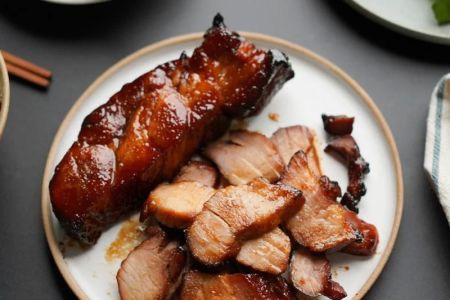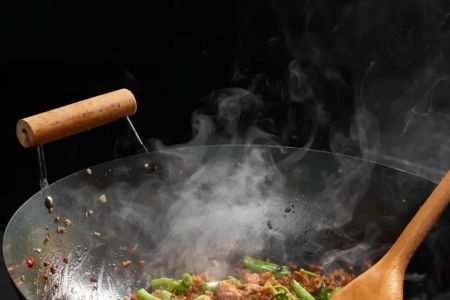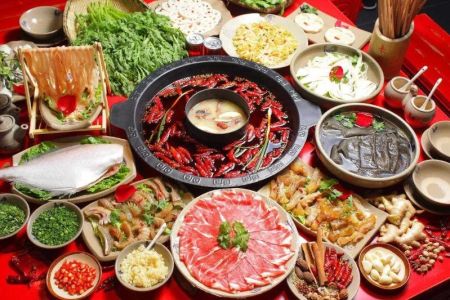Is It Safe to Go to a Chinese Restaurant?
As someone who loves exploring different cuisines, I have always been drawn to Chinese food. Whether it's a casual takeout or a fine dining experience at a Chinese restaurant, the variety and richness of the flavors never fail to impress. But, as with any type of food, safety is an important consideration. So, the question remains: is it safe to go to a Chinese restaurant? After years of dining out and learning more about food safety, I’ve gathered some essential tips and insights that can help you enjoy Chinese cuisine with confidence.
1. Understanding Food Safety in Chinese Restaurants
One of the most important factors to consider when dining at any restaurant, including Chinese establishments, is food safety. Foodborne illnesses are a risk at any restaurant, but many people have concerns about Chinese restaurants due to misconceptions or past food safety issues. However, by understanding the common safety practices and potential risks, you can make informed decisions and enjoy your dining experience worry-free.
1.1 How Chinese Restaurants Ensure Food Safety
Chinese restaurants, like any other establishments, are required to follow strict food safety guidelines. These include keeping food at the correct temperatures, preventing cross-contamination, and ensuring that ingredients are fresh and properly stored. Many restaurants even go beyond the basic requirements by training their staff in food handling best practices. It’s worth noting that, just like in any restaurant, the safety of your meal heavily depends on the specific location and its adherence to these standards.
2. What to Look for in a Chinese Restaurant to Ensure Safety
When selecting a Chinese restaurant, there are several factors you can consider to ensure your dining experience is both enjoyable and safe. I’ve found that paying attention to the cleanliness of the restaurant and the way food is prepared can help minimize any food safety concerns. Here are some things I’ve learned to look for:
2.1 Cleanliness of the Restaurant
The cleanliness of a restaurant can tell you a lot about its food safety practices. Make sure the dining area is clean, and take a look at the restrooms, as these are often indicators of the overall hygiene standards. The kitchen area is where the most important work happens, but as diners, we can’t always see it. However, some restaurants have open kitchens where you can watch the chefs at work. If you see them following proper hygiene practices (such as washing their hands regularly and wearing gloves), it’s a good sign that they care about food safety.
2.2 Food Handling and Storage
Proper food handling and storage are crucial for preventing foodborne illnesses. I always check whether the restaurant’s food appears fresh and is stored properly. For example, fresh vegetables should be kept cool, and raw meat should be stored separately from ready-to-eat items to prevent cross-contamination. If the food looks fresh and well-prepared, the restaurant is likely following good food safety practices.
3. Common Health Concerns in Chinese Restaurants
Although Chinese restaurants generally follow food safety standards, there are some unique concerns that diners should be aware of. From MSG sensitivity to the potential risks of street food vendors, there are a few things to keep in mind to avoid health issues.
3.1 MSG Sensitivity
One of the most common concerns when dining at Chinese restaurants is the use of monosodium glutamate (MSG). While MSG is a flavor enhancer commonly used in Chinese cuisine, it has been known to cause mild symptoms such as headaches and sweating in some people who are sensitive to it. If you’re sensitive to MSG, many restaurants now offer dishes that are MSG-free or can customize the food to your needs. Don’t hesitate to ask the staff about this before placing your order.
3.2 Street Food Risks
Street food is a popular option in many cities, and Chinese street food is no exception. While street food can be delicious and affordable, it also carries a higher risk of foodborne illnesses due to the lack of regulation and hygiene controls. If you're craving authentic Chinese street food, it’s best to do some research and read reviews to find vendors who are known for maintaining high food safety standards. Alternatively, choosing a reputable sit-down Chinese restaurant can often provide a safer and more controlled dining experience.
4. How to Minimize Your Risks When Dining at a Chinese Restaurant
Although dining at a Chinese restaurant is generally safe, there are a few extra steps you can take to minimize any risks. Having learned from my experiences and talking to industry professionals, here are some tips that I follow to ensure a safe and enjoyable meal:
4.1 Choose Well-Reviewed Restaurants
One of the best ways to ensure the restaurant follows good food safety practices is to choose a well-reviewed place. Online reviews, food blogs, and even word-of-mouth recommendations can help you make an informed decision. I always check reviews for cleanliness, food quality, and service before visiting any new restaurant.
4.2 Avoid Raw or Undercooked Foods
Chinese cuisine offers many delicious options, but some dishes, such as sushi or certain dim sum, may include raw or undercooked ingredients. If you’re concerned about food safety, I recommend avoiding raw foods, as these carry a higher risk of foodborne illnesses. Opt for cooked dishes instead, which are generally safer to eat.
5. Signs of Poor Food Safety Practices to Watch Out For
In my journey of exploring Chinese food, I’ve learned to recognize a few red flags that indicate poor food safety practices. These are signs that should make you reconsider your decision to dine there:
5.1 Unpleasant Smell
One of the first things I notice when entering any restaurant is the smell. If you notice an unpleasant odor, it could be a sign of poor food storage or sanitation practices. Fresh food should smell appetizing, not sour or rotten. If the smell is off-putting, it’s better to choose another restaurant.
5.2 Unkempt Staff or Dirty Dishes
When dining out, it’s important that the staff maintain proper hygiene. Dirty uniforms, unwashed hands, or lack of gloves can be signs of poor food safety practices. I always pay attention to whether the staff is properly dressed and whether their hygiene is up to standard. Similarly, if the dishes or utensils look unclean, it may be best to leave and find a cleaner restaurant.
6. Conclusion: Enjoying Chinese Food Safely
Chinese restaurants, like any other dining establishments, can provide a safe and enjoyable experience as long as proper food safety standards are followed. By being mindful of the cleanliness of the restaurant, asking about ingredient use, and choosing well-reviewed locations, you can minimize any risks and fully enjoy the flavors of Chinese cuisine. If you have concerns about specific food safety issues, don't hesitate to ask the restaurant staff for information. With these precautions in mind, I’m confident that your dining experience will be both safe and delicious.






![Top Chinese Restaurants for Authentic Cantonese Cuisine in [Your City]](https://img.gochinarose.com/d33/2507/4157910400_450x300.webp)
